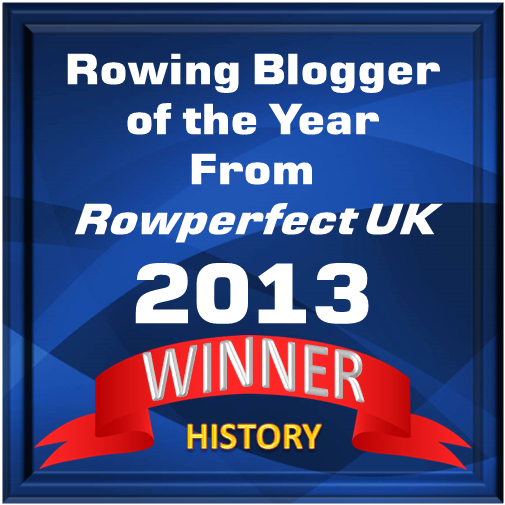
The British rowing season has begun HTBS's Tim Koch reports:
The 17 March saw the first of the four 'head races' for eights over the Thames Championship Course in London that mark the real start of the British rowing season. These four 'heads' or time trials are:
The Schools' Head which, this year, was on 17 March.
The Women's Head on 19 March.
The Eights (Men's) Head on 2 April.
The Veterans' (Masters) Head on 3 April.
 The 'Championship Course' is the 4 mile 374 yard (6,779 metres) Mortlake to Putney course, most famously used in the Oxford-Cambridge Boat Race (but in the other direction). It has been used for boat racing since at least the mid nineteenth century as the 's' shaped course is as fair as one that is not straight can be. In 1999 the Amateur Rowing Association, ARA (now British Rowing) produced a video, 'Coxing a Tideway Head'. It makes interesting viewing and a lot of effort was put into its production but its random switching between 'safety' and 'steering' makes it difficult to follow if you are not already familiar with this part of the river.
The 'Championship Course' is the 4 mile 374 yard (6,779 metres) Mortlake to Putney course, most famously used in the Oxford-Cambridge Boat Race (but in the other direction). It has been used for boat racing since at least the mid nineteenth century as the 's' shaped course is as fair as one that is not straight can be. In 1999 the Amateur Rowing Association, ARA (now British Rowing) produced a video, 'Coxing a Tideway Head'. It makes interesting viewing and a lot of effort was put into its production but its random switching between 'safety' and 'steering' makes it difficult to follow if you are not already familiar with this part of the river.The Schools Head of the River is the only one of these events that also allows quads and coxed fours. The 2011 entry was 192 eights, 78 coxed fours and 21 quads. The results are here. The top five eights were:
1 Abingdon 16:53
2 Eton 16:58
3 Shrewsbury 17:01
3 Radley 17:01
5 Shiplake 17:11
The top two positions are a reverse of last year when Eton beat Abingdon.
As may be expected, parents turn out to give noisy, partisan and generally uninformed support. It is also a fairly 'social' occasion as most of the schools taking part are private, fee paying institutions. As my pictures show, one of the favourite viewing platforms is Hammersmith Bridge. Many people cluster around the famous 'second lamppost from the left of the Surrey buttress' as this is the one point that even the most incompetent coxswain knows that they have to aim for to get the fastest water.
Two days later, 19 March, two hundred and ninety seven crews took part in the 76th Women's Head of the River Race. It was a warm, calm day and rowing conditions were good. The results are here and the top five were:
1 Leander Club 18:06
2 Durham Amateur / Gloucester / London / Marlow / Reading Uni. / Thames / Wallingford 18:40
3 Reading University BC 18:53
4 Imperial College / Sport Imperial 19:08
5 Tucano Urbano 19:20
The Durham composite (I think they were all Internationals) started at 214 (and so got the slower tide) while Leander went off first (with the fastest water) so there will be much debate on who is really the fastest but it is a strange spread of times for the top crews.
The first WHoRR was held in 1927, only a year after the (Men's) Head of the River Race started. The British Path site shows film of that first women's (two boat) race:
FIRST WOMEN'S BOAT RACE
It took a long time for the event to become what it is today as can be seen from the short history of the WHoRR on their website.
I was kept busy driving one of the umpires' boats so did not manage to take any pictures during the race, but luckily I could rely on others, like Claire Waterworth and Giles Bedford.
Reports from the Men’s Head and Veterans’ Head will follow on 3 April.
 David Biddulph, on the left, runs his own rowing web site. Take a look at www.rowing.biddulph.btinternet.co.uk/
David Biddulph, on the left, runs his own rowing web site. Take a look at www.rowing.biddulph.btinternet.co.uk/Great thanks to Tim for the report and to Claire Waterworth and Giles Bedford for allowing their photographs to be posted here on HTBS.















.jpg)



+Cambridge+Boat+of+2013..JPG)
No comments:
Post a Comment